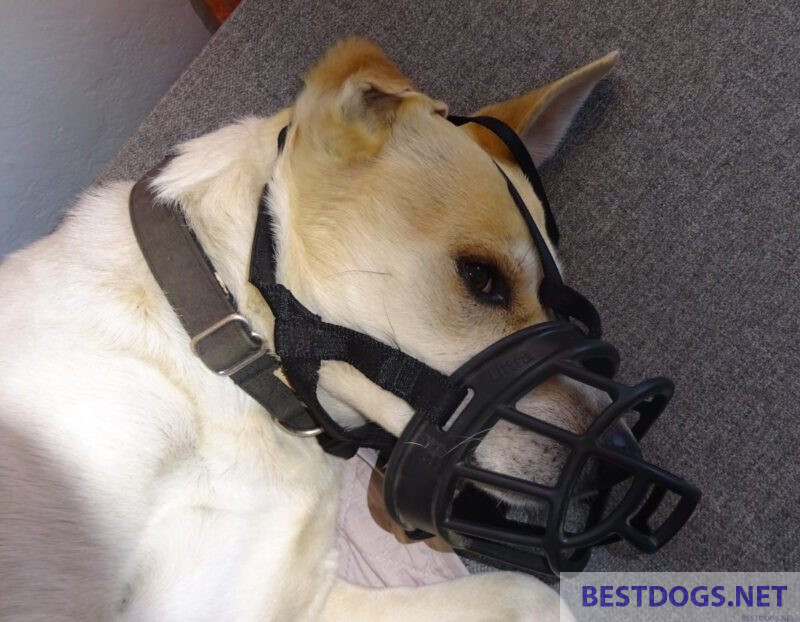Potential Problems with Dogs and Solving Common Behavioral Issues.

Dog ownership brings joy to millions, but it also comes with challenges that if left unaddressed, can lead to serious behavior problems.
Understanding and addressing these potential issues is essential for the well-being of the dog and the harmony of its home environment.
Training plays a pivotal role in preventing and solving behavior problems in dogs. It begins in puppyhood and continues throughout the dog’s life, providing the structure and boundaries that dogs need to thrive.
Individual reports on problems with dogs
Potential Problems with Dogs and Solving Common Behavioral Issues
Table of Contents
Behavioral problems in dogs can range from excessive barking to aggression, each with its own set of causes and solutions.
For effective training and resolution, the root of the behavior must be identified. This might involve understanding the dog’s body language, its environment, and its history.
Proper socialization is also a key factor in preventing behavior issues. Introducing a puppy to various people, animals, and situations at a young age can help foster confidence and reduce anxiety, leading to a more well-adjusted adult dog.
Addressing canine behavior problems often requires patience, consistency, and the willingness to seek professional help when necessary.
There’s a wealth of strategies available to guide dog owners through the process, from positive reinforcement to behavior modification techniques.
Understanding Dog Behavior
When it comes to understanding dogs, recognizing that behavior is influenced by a combination of genetics, environment, and training can provide greater insight into managing and addressing various actions and reactions they exhibit.
Developmental Stages and Socialization
From birth to adulthood, dogs go through various developmental stages, with puppyhood being critical for socialization.
Puppies learn about interacting with other dogs, humans, and their environment during this period. Exposing them to a variety of situations and stimuli can lead to well-adjusted adult dogs less likely to exhibit fear or aggressive behavior.
Common Behavioral Problems and Their Origins
Many behavior problems stem from a lack of training, past traumas, or environmental factors.
Common issues include destructive chewing, excessive barking, and aggression, which may arise from boredom, anxiety, or territorial instincts.
Addressing these behaviors often requires understanding their origins and context, like those related to survival instincts.
The Impact of Breed on Behavior
Dog breeds are often associated with specific traits and predispositions.
For example, herding breeds may tend to herd children or pets, while sporting breeds may require more physical activity to stave off restlessness. Understanding a dog’s breed can help predict certain dog behaviors and guide the approach to training and behavior management.
Training and Behavior Modification
Training and behavior modification in dogs encompass methods to not only teach basic commands but also address problematic behaviors effectively.
These approaches demand consistency, patience, and understanding of canine psychology to achieve desired outcomes.
Basics of Obedience Training
Obedience training lays the foundation for a well-behaved dog.
It begins with simple commands such as sit, stay, and come. Consistent reinforcement of these commands is pivotal for a dog’s ability to follow directions.
Leash training is also essential, ensuring dogs walk without pulling or excessive barking.
Advanced Training Techniques
For dogs that have mastered basic obedience, advanced training techniques pose new challenges and enhance their problem-solving skills.
Techniques such as agility training or scent detection work well with working dogs who often exhibit high energy and require mental stimulation to avoid destructive behaviors.
Behavior Modification Strategies
Behavior modification strategies target specific problems such as digging, jumping up, biting, destructive chewing and inappropriate hiding of objects.
Effective strategies include redirecting attention to appropriate objects, gradual desensitization, and removing rewards for attention-seeking behaviors.
Persistence in these methods ensures the best chance of modifying unwanted behaviors.
Health and Environmental Influences
Understanding the relationship between a dog’s health and its environment is crucial for maintaining its wellbeing.
By discerning health issues and acknowledging how the environment can impact a dog’s behavior, caretakers can implement better care strategies.
Recognizing and Addressing Health Issues

It’s important for dog owners to be vigilant about pet health.
The onset of health problems can often be subtle, making regular veterinary check-ups essential.
Health issues such as allergies, infections, or more chronic conditions like arthritis can significantly impact a dog’s quality of life.
- Common health problems in dogs include:
- Dental disease
- Obesity
- Parasitic infections
- Skin conditions
Owners should watch for signs like changes in appetite, lethargy, or alterations in stool or urine as indicators of potential health concerns. Timely intervention with appropriate exercise, diet, or medication is pivotal.
Environmental Factors Affecting Behavior
A dog’s environment plays a substantial role in its behavior and wellbeing.
Factors such as insufficient exercise and lack of quality time with owners can lead to issues like anxiety and destructive behavior.
Providing environmental enrichment through toys and engagement can mitigate behavioral problems.
It’s also important to ensure a safe physical environment to prevent accidents or injuries that can lead to health issues.
- Key environmental influences include:
- Adequate physical space to explore and rest
- Opportunities for social interaction with humans and other dogs
- Mental stimulation through toys, games, and training
Professional Help and Resources

Owners may find that addressing their dog’s behavior problems can be a complex task.
Professional training and resources are valuable in identifying underlying causes and creating effective intervention strategies.
Appropriate expert assistance ensures that both safety and animal welfare are prioritized.
When to Seek Professional Training
One should consider professional training if their dog displays persistent behavior problems that are not mitigated by basic obedience training or pose a safety risk.
Behavior problems, such as aggression, fear, or anxiety-related issues, often require intervention from experienced trainers or behaviorists who can assess the situation thoroughly.
For instance, interventions are crucial when a dog’s behavior poses a risk to the dog or others, and it’s often advisable to seek professional help ASAP.
Statistics on canine behavior underscore the importance of early intervention. Problems not addressed promptly may escalate, potentially leading to negative outcomes such as relinquishment or even euthanasia.
Choosing the Right Trainer or Behaviorist
-
Credentials and Experience: Look for trainers with credible certifications and a solid track record.
It’s essential to choose professionals with experience in addressing the specific issues your dog is facing.
-
Methods: Verify that the trainer uses force-free methods which rely on positive reinforcement rather than punishment.
Force-free training is recommended as it promotes trust and strengthens the human-animal bond.
-
Observation: Consider observing a training session or asking for references to gauge the trainer’s effectiveness and approach to handling dogs with behavior problems.
-
Communication: Ensure the trainer communicates clearly and provides you with resources for understanding and reinforcing the training at home.
In addition to in-person training, various resources such as online articles and virtual consultations can provide valuable advice on behavior management.
Owners should leverage every tool at their disposal to ensure their dogs have the chance to thrive in a safe and understanding environment.
Other possible solutions and tips
In some cases, it may be necessary to change your dog’s environment to solve behavioral problems. For example, if your dog exhibits destructive chewing behavior, it may be helpful to provide him with appropriate chew toys and ensure that he has plenty of mental stimulation to divert his attention away from destructive behavior.
If your dog is prone to excessive barking, creating a calm environment and addressing underlying anxiety can also help to reduce the need for excessive barking.
It is important to remember that solving problems with dogs takes time and consistency. It is unrealistic to expect immediate results, and setbacks may occur along the way. However, with patience, persistence and a willingness to understand and address the cause of the behavior, you can make significant progress in solving behavior problems and building a harmonious relationship with your furry friend.
By taking these tips to heart and seeking professional help when needed, you can overcome the challenges associated with dog behavior problems and create a loving and well-behaved companion that brings joy and happiness into your life.












